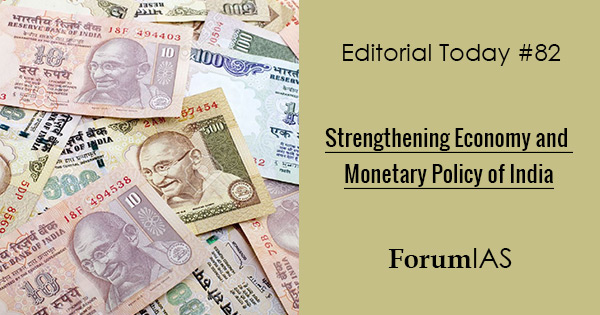 Introduction
Introduction
India has been able to brush off many global crisis without any significant effect on it’s economic health.
Most recent example of this successful trend is seen post-Brexit. After the worldwide shockwaves sent by Brexit, India has shown the signs of strong foundation, it has built in recent years.
Signs of strong foundations
- Foreign direct Investment (FDI) in India have increased by 29 per cent during October 2014-December 2015 period post the launch of Make in India campaign.
- India has emerged as the fastest-growing economy in 2016
- Purchasing Managers’ Index (PMI) for February 2016 was reported at 51.1, indicating expansion in Indian manufacturing activity for a second month in a row.
- Recently inflation has halved.
- Central government fiscal deficit has narrowed by a third.
- Current account deficit (CAD) has gone from 5 per cent of the GDP in 2013 to 1 per cent of GDP in 2016.
- India’s foreign exchange reserves have rose to $363.12 billion.
Reasons of good economic health of India
Falling oil prices
- Price fall has translated into huge savings on imports, besides benefiting industries that use oil and its derivatives. Industries include oil, auto, paint, aviation, cosmetic and fast moving consumer goods (FMCG) companies.
FDI reforms
- FDI reforms have improved the quantum and quality of capital.
- Very recently government has announced fresh liberalisation of FDI rules throwing open food retail, airlines and private security firms to higher overseas investment.
- Other sectors in which FDI norms have been relaxed include e-commerce in food products, broadcasting carriage services, private security agencies and animal husbandry.
Fiscal and monetary policies
- Stability and predictability has been restored in tax decisions reflected in the settlement of the Minimum Alternate Tax (MAT) imposed on foreign companies. Major public investment has been undertaken to strengthen the country’s infrastructure.
- Most important factors contributed in macroeconomic stability have been sound fiscal and monetary policies post the taper tantrum, evidenced by the fact that the macros began to improve well before oil prices fell.
Monetary policy reforms
Implementation of Urjit Patel Committee Report
- Urjit Patel committee had suggested a five member Monetary Policy Committee (MPC) with 3 RBI representatives. Patel had also recommended 4% of inflation rate with 2% of margin on either side.
- Following which Monetary Policy Framework Agreement, signed by the Centre and the Reserve Bank of India.
- According to agreement Reserve Bank will aim to bring inflation below 6 per cent by January 2016. The target for financial year 2016-17 and all subsequent years will be 4 per cent with a band of +/- 2 per cent. (Inflation here is the Consumer Price Index (CPI) or retail inflation).
- RBI will give a report to the Centre if it fails to meet the target.
- Agreement also binds the Centre to taking proactive measures for price control.
RBI act amendments
- Recently amendments to RBI Act for Monetary Policy Committee (MPC) and connected rules were notified.
- The six-member Committee — tasked with bringing “value and transparency to monetary policy decisions” — will comprise three members from RBI, including the Governor, who will be the ex-officio chairperson, a Deputy Governor and one officer of the central bank.
- Act mandates that the central government, in consultation with the RBI, determine the inflation target every five years and notify it accordingly.
Need for further improvements in monetary policy
- According to the Monetary Policy Framework Agreement, government can change the inflation target from what it had agreed to last year.
- Essence of inflation targeting is about consistent application to anchor inflation expectations. It’s hard to anchor expectations if we have a moving target. Government may move the inflation target to very high or very low level, both of which scenarios are not good for economy
- Upper limit of 6 percent should have been frozen for RBI to target in RBI act, it would have given more confidence to economic agents that inflation would not stay above 6 per cent on a sustained basis.
- Hard-coding the boundaries into the Act would have created bounded-discretion.

Leave a Reply